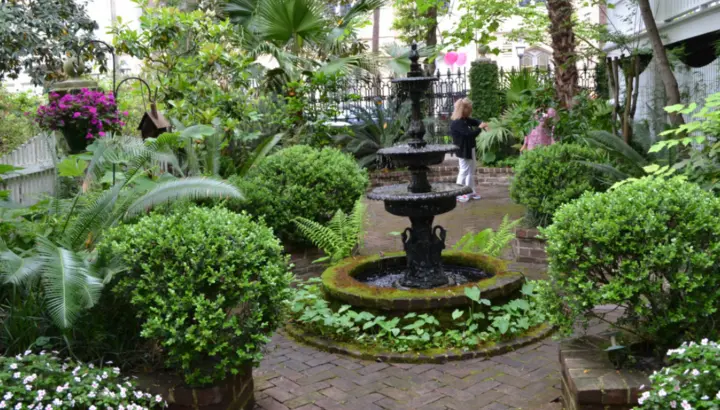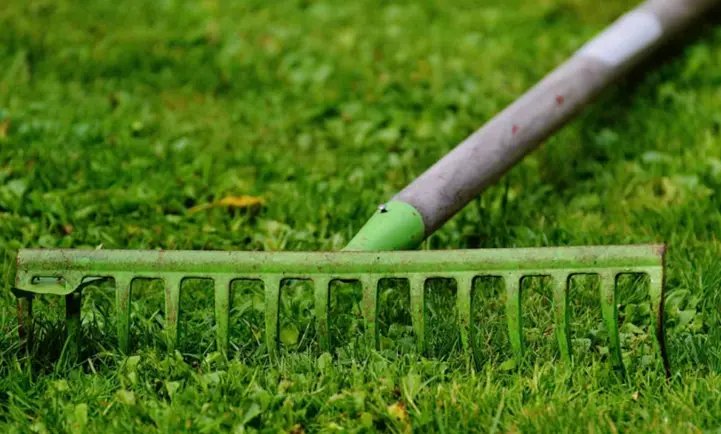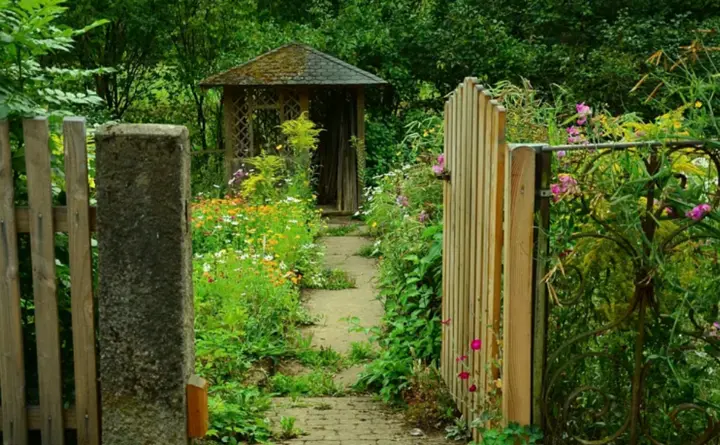From seed to bud: a beginner's guide to starting your own garden
Private gardens are a tranquil haven where people can get away from the hustle and bustle of everyday life and relax in a beautiful natural setting. Creating a private garden can be both an exciting challenge for creativity and a useful project for the soul. However, many people may be afraid of the idea of creating a private garden, especially if they are beginners in the field. Therefore, we offer you this comprehensive guide that will help you turn a small seed into a wonderful bud in your own garden.
Show key points
- Selecting the right location with good sunlight, ventilation, and protection from environmental hazards is the essential first step in building a thriving private garden.
- Understanding your geographic area and choosing plants that are native or well-suited to its climate significantly boosts your garden’s success.
- Proper soil preparation, including aeration, removing debris, enriching with organic matter, and adjusting pH levels, lays the groundwork for healthy plant development.
- ADVERTISEMENT
- Consistent daily care—providing water, nutrients, adequate light, and protecting from pests—ensures robust plant growth and maintains garden aesthetics.
- Incorporating decorative elements like fountains, garden furniture, and artistic touches can transform your garden into a harmonious blend of nature and personal expression.
- Harvesting your garden’s yield brings both emotional satisfaction and tangible rewards, offering fresh produce and a deeper connection with nature.
- Creating and nurturing a personal garden is a fulfilling journey that combines creativity, relaxation, and self-discovery in a space uniquely your own.
1. Choose the perfect location: where your journey begins in creating a private garden.

The sun shimmered in a clear sky, and the wind was fragrant with the fragrance of blooming flowers. And here, in this picturesque place, my adventure begins to create a private garden. Choosing the perfect location is an important first step in my journey. I am looking for a place with good lighting and proper ventilation, where plants receive enough sunlight to grow and have the right thermal balance.
Recommend
Quickly, I found myself standing in front of a bright field of green land, with a breathtaking view of the mountains on the distant horizon. The land here was fertile and rich in organic matter, which meant that the plants would find an ideal environment for growth. I decided that this place is the perfect location for my own garden.
However, I had to take many factors into account. For example, I had to know if the area was receiving moderate rainfall and had a proper irrigation system. I also ensured that the site is not exposed to destructive factors such as flooding or landslides. After careful study and consultation of local experts, I came to the conclusion that this location is ideal for starting my own garden.
Thus, I started my journey in creating my own garden, I started it with a small but important step. Undoubtedly, choosing the ideal location is the basis for building a prosperous garden. I will eagerly wait to see my seeds grow in this place, looking forward to the exciting journey that awaits me in the next stages of creating my own garden.
2. Choosing the right plants: How to ensure successful growth of plants suitable for your geographic area.

Emma was a bit apprehensive when she started thinking about creating her own garden. She didn't have much garden experience, and she was confused about choosing the right plants to grow in her geographic area. She had big ideas and dreams, but how could she turn them into reality?
Emma decided to start researching and learning about plants suitable for her geographical area. She wanted to find plants that would grow well in the climate, soil and environmental condition of her area, a process that required some study and planning.
Emma started visiting local garden centers and talking with local experts. She had a lot of questions and inquiries, and specialists were giving her valuable advice and advice. Emma learned that plants suitable for the geographical area are those that grow naturally in the area and tolerate weather and soil changes.
Emma then headed to the local library and started reading books and magazines specializing in gardens. She found many useful tips and information about which plants are suitable for her region and how to preserve them.
Over time, Emma became familiar with plants suitable for her geographic area. She realized that she could choose plants that would grow strongly and beautifully in her garden. Emma chose a variety of native plants that were suitable for climatic conditions, such as drought-tolerant flowers and variegated shrubs.
Emma was happy with the results she achieved. The plants began to grow quickly and strongly, and they had beautiful colors and fragrant aromas. She felt proud when friends and family came to visit her garden and pay tribute to her natural beauty.
In this way, Emma was able to ensure the successful growth of plants suitable for her geographical area. She decided to share her knowledge with others, which is why she created this comprehensive guide for beginners to start your own garden.
3. Soil preparation: The essential step to ensure the success of your plants.

The sun's rays intensify in clear skies, and temperatures gradually rise. It is a beautiful summer and perfect for starting your own garden adventure. But before you start growing impressive plants, an essential step you should take to ensure your plants succeed is preparing the soil.
Soil preparation is the foundation that will nourish your plants and contribute to their healthy and beautiful growth. It's a very crucial step, ensuring that your plants get the necessary nutrients and good ventilation they need to grow properly. So, let's take a closer look at how to prepare the soil:
First, you should purify the soil from impurities and get clean and healthy soil. Remove large stones and weeds to improve soil quality. Then prepare the soil with a fork or soil clamp to help improve soil aeration and prevent clumping.
Next, improve soil composition by adding organic matter such as cultivated manure? Or cow manure or organic residue fertilizer. These organic matter will provide the soil with the necessary nutrients and help improve the overall structure of the soil.
Next, check the soil pH and adjust it if necessary. Some plants need acidic soil, while others need alkaline soil. Buy a soil acidity test kit and follow the instructions to ensure that the soil is compatible with the needs of the plants you wish to grow.
Finally, level the soil and make it homogeneous before you start planting seeds or seedling plants. Use a shovel or soil fork to evenly distribute the soil and avoid its accumulation in certain areas. Also keep in mind that some plants need a specific soil depth, so be sure to read the planting recommendations for the plants you choose.
By completing these simple steps, you can now move on to the next step in the adventure of creating your own garden. After preparing the soil well, you can start planting seeds or moving the seedlings to the ground and watch the beautiful and healthy growth of your plants in the coming days. Watch your efforts come to life and turn the seed into a thriving plant in your own garden.
4. Daily care: How to care for your plants to achieve healthy and beautiful growth.

When starting your own garden, you should remember that daily plant care is the key to achieving healthy and beautiful growth. Beautiful gardens are the result of constant attention and care. Let's reveal some important secrets to caring for your plants and helping them bloom:
First, make sure you provide enough water to your plants. Water is the essential element that a plant needs for good and healthy growth. Water the plants regularly and make sure the soil is appropriately moist. Try to monitor and adjust the soil moisture according to the needs of each plant.
Second, provide your plants with the right nutrients. The plant needs many nutrients for good growth, such as nitrogen, phosphorus and potassium. You can use organic fertilizers or chemical fertilizers to nourish your plants and provide them with the necessary elements.
Third, remove weeds and dead leaves from around the plants. These weeds can compete with plants for water and nutrients, so it's essential to remove them regularly. In addition, it should remove dead leaves as they can become a hotbed of diseases and insects.
Fourth, make sure you provide the right lighting for your plants. Adequate lighting is necessary for the process of photosynthesis and plant growth. If you don't get enough natural light, you can use special artificial lights to promote plant growth.
Finally, don't forget to pick up and remove insect pests that may attack your plants. You can use opium or biodegradable pesticides to eliminate harmful pests.
Daily care for your plants is the key to the success of your own garden. Because they make a real difference in the growth and aesthetic appearance of plants. Provide water, food, light and care for your plants, and you'll see amazing results in turning a small seed into a beautiful bud in your own garden.
5. Add decorative elements: how to give an artistic touch to your own garden.

Lara contemplated her beautiful garden as she thought about the perfect moment to add some decorative elements that would add an artistic touch to this beautiful living work she created herself. She had taken a long time choosing the right plants and preparing and caring for the soil on a daily basis, and now it's time for the final addition that will make her garden stand out and impressive.
Lara began to think about decorative elements that would complement the shape of the garden and reflect her artistic character. She decided to start by adding a small fountain in the center of the garden. She chose a fountain with a classic design from which water flows with different types of sprinklers. The fountain added a touch of beauty and calmed the nerves, as soon as you hear the sound of flowing water, you can indulge in calm and tranquility.
Lara completed the décor by adding some garden furniture, such as a set of wooden chairs and tables, where she can enjoy a cup of coffee on a bright sunmorning or relax and read a book on a pleasant summer evening. She also hung some decorative lights in the surrounding trees to add a magical touch on warm nights.
But Lara wasn't quite comfortable yet, so she decided to consult her artist boyfriend, who recommended that she add a colorful painting on the garden fence. He gave her many ideas and chose an image of a bouquet of beautiful flowers that express life and growth.
In the end, Lara decided to add some small decorations made of porcelain and stained glass, such as figurines and hanging flower plates, to add a personal touch to the different corners of the garden. The motifs were not just beautiful objects, they expressed the details of Lara's life and her interest in art and beauty.
In this way, Lara Garden has become a magical place where art and nature harmonize, where she can enjoy the breathtaking beauty she has created herself. Now, she has a place where she can relax and get away from the stresses of everyday life, and enjoy the splendor of nature and art at the same time.
6. Enjoy the fruits of your labor: the benefits of a successful harvest and ways to enjoy the products of your own garden.

The trees dance with the gentle breezes of the wind, the flowers shine brightly, while the seeds you planted with your hands grow in the warm sun. Nothing beats the happiness and radiance you feel when you reap the fruits of your labor in your own garden. Here, we will talk about the benefits of a successful harvest and how to enjoy the products of your own garden:
I carefully planted the seeds and watered them with water and love, and now the fruits are gradually ripening. A successful harvest is the moment you eagerly await, as it embodies your efforts and care. The experience of reaping the fruits of your own garden is not just a harvest, it is a story full of joy and discovery.
When you reap your fruits, you will discover the secret of nature and the process of life. You will witness the small wonders that occur daily among plants and insects. Harvesting is not only about the nutritional benefits of your fruits, it is also about the renewed spirit and deep connection with nature.
After harvesting the harvest, comes the special moment to enjoy the products of your own garden. You can enjoy delicious fruits that have been lovingly ripe in your garden, savor the taste of juicy citrus fruits or sweet strawberries that fill your mouth with happiness. You can also use herbs and spices grown with your own hands to add a unique flavor and taste to your favorite dishes.
And don't forget about other prizes that you can enjoy from your own garden. Use fresh flowers and leaves to add a touch of beauty to your home, or make a bouquet of flowers to give as a gift to a loved one, and listen to the encouraging compliments you will receive from everyone.
Successful harvesting and enjoying the products of your own garden is a magical and spiritual experience. Make every new day in your garden an opportunity to learn and enjoy the beauty of nature. Enjoy the taste of ripe fruits and feel proud to know that every drop of water and soil plate contributed to the growth of this beauty. Nothing beats the happiness of enjoying the fruit of your work and living in harmony with the nature around you.







